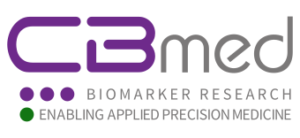Sustainable pathogen inhibition test
Pathogen inhibition tests are a valuable tool to screen for antimicrobial substances, or – as we do it at CBmed – design evidence based microbiome modulating strategies. We implemented a workflow that allowed us to monitor the growth of anaerobic bacteria in the presence or absence of interesting substances by culturing them in oxygen-free mini-habitats. These mini-habitats can be accessed or sampled through a septum using a sterile needle and syringe. During an average experiment collecting valuable data for our projects, vast amounts of needles, syringes and their individual wrappings were used and wasted. But then COVID hit and needles and syringes were suddenly a very scares resource. The usual trouble shooting attempts – finding another supplier, using different gauge needles etc. – all failed. Unless we found a way out of this shortage, this would have been the end of our pathogen inhibition tests.
And then – it was during one of these somehow aimless, I-am-not-allowed-to-be-outside-for-any-other-reason, lock-down walks along the river –an idea came to life: How do you measure bacterial growth without the possibility of ever sampling the culture? You put the whole culture in the photometer. 😊 We appropriated a portable photometer commonly used in ecological field studies and found a culture tube that was autoclavable, airtight, sealable with a septum, pressure resistant, round for easy cleaning, big enough to sustain reproducible growth patterns and still small enough to fit into this portable photometer. Long story short, supply shortages during the COVID pandemic forced us to restructured our pathogen inhibition tests completely. And now, we use up to 70% less consumable, generate less waste, save a lot of money, and process three times as many samples in the same time. And the cherry on top: Because we do not need to take samples from the culture anymore, the risk of contaminating the bacterial culture with oxygen or other microbes and the risk of contaminating the environment with our bacterial culture are now negligible, and needle stick injuries are also in the past.
The Author
Angela Horvath
Priv.-Doz. Mag.rer.nat. PhD.





